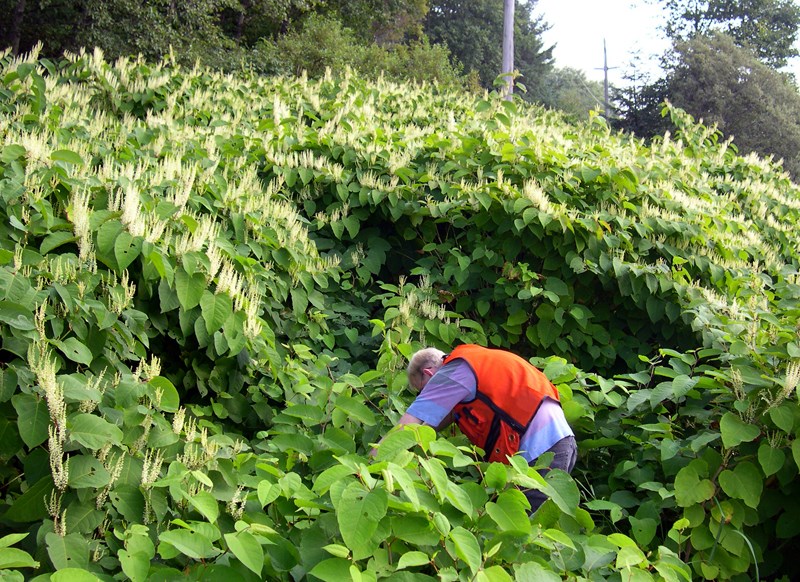A group in Roberts Creek has offered to create a test site at Henderson Beach for eradicating Japanese knotweed without the use of chemicals.
“Our community is overwhelmingly against using Roundup to control this plant and there has been a great deal of support in finding and implementing alternatives,” Mike Allen, a member of the Roberts Creek official community plan committee, wrote the Sechelt Indian Band and Sunshine Coast Regional District (SCRD) last month.
The Sunshine Coast Con-servation Association and Sunshine Coast Wildlife Project are also involved in the effort, which would initially focus on the Ministry of Transportation and Infrastructure (MOTI) right of way on Henderson Road.
“It would be ongoing and it would be regular and would take a considerable amount of time,” Roberts Creek director Donna Shugar told officials from MOTI and Capilano Highways at last month’s transportation committee meeting.
In a July 10 report to the SCRD’s community services committee, parks planning coordinator Trevor Fawcett said MOTI appears to be onboard with the initiative, provided the work is done under a permit.
The group will need to provide a written commitment to cutting a minimum of twice a month or once the growth reaches eight centimetres (whichever comes first) and a disposal plan will be required.
MOTI also suggested the group continue to research herbicide treatment, which it says is the most effective tool to eradicate the invasive weed.
“It is expected that future SCRD works adjacent to knotweed sites will require herbicide treatment by a qualified applicator,” MOTI said in its response. “It shall also be noted that future permits requiring treatment will be contingent upon herbicide treatment.”
In his letter, Allen said the community’s long-term plan is to “work towards having people committed to responsibly eradicating and maintaining the suppression of knotweed in all areas of Roberts Creek.” The group hopes its success will inspire other communities to look for more environmentally friendly ways to treat invasives, he said.
Knotweed, also known as false bamboo, grows up to four centimetres a day and can pose a serious threat to buildings and infrastructure, Rachelle McElroy, executive director of the Coastal Invasive Species Committee, told the SCRD’s planning and development committee last month.
McElroy said manual control of knotweed is “very labour-intensive but doable if you have a small patch on your property.” Even treatment by injecting the chemical Glyphosate (the active ingredient in Monsanto’s Roundup) can take three to five years, she said.
She described Glyphosate as “practically non-toxic to fish, mammals and honeybees,” but “slightly toxic” to birds and some aquatic organisms.
McElroy said her organization was looking to create regional partners to manage invasives.
“We have a large area, which is why collaboration is key,” she said.
West Howe Sound director Lee Turnbull said people in her area were willing to start fighting knotweed, but needed help setting up.
“They actually want vests, injections and signs, and they keep watching it grow while we’ve got knotweed all over the place,” Turnbull said.
McElroy said her office could help with organizing and education, but added that “a bigger strategy” was needed for the Sunshine Coast.
Elphinstone director Lorne Lewis noted that a “committed group of volunteers” had been making headway treating knotweed on Crown land near Chaster Creek, where they were trying to avoid the use of Roundup, but “were invited not to work there any more” by MOTI.
“That was our experience and it was hurtful to the volunteer group,” Lewis said.
At the June 26 board meeting, Turnbull said she was concerned about the lack of “a coordinated, integrated plan,” and Shugar drafted a resolution to submit to the Union of B.C. Municipalities, calling for it to work with the province to “recognize the emergency nature” of knotweed and “adequately plan for and resource its removal from provincial roadways.”
The resolution, which passed unanimously, notes that knotweed, which is spread by cutting and digging, is “proliferating at an alarming rate on public roadways,” and that local governments lack the jurisdiction and resources to manage invasives on Crown land and provincial rights of way.



